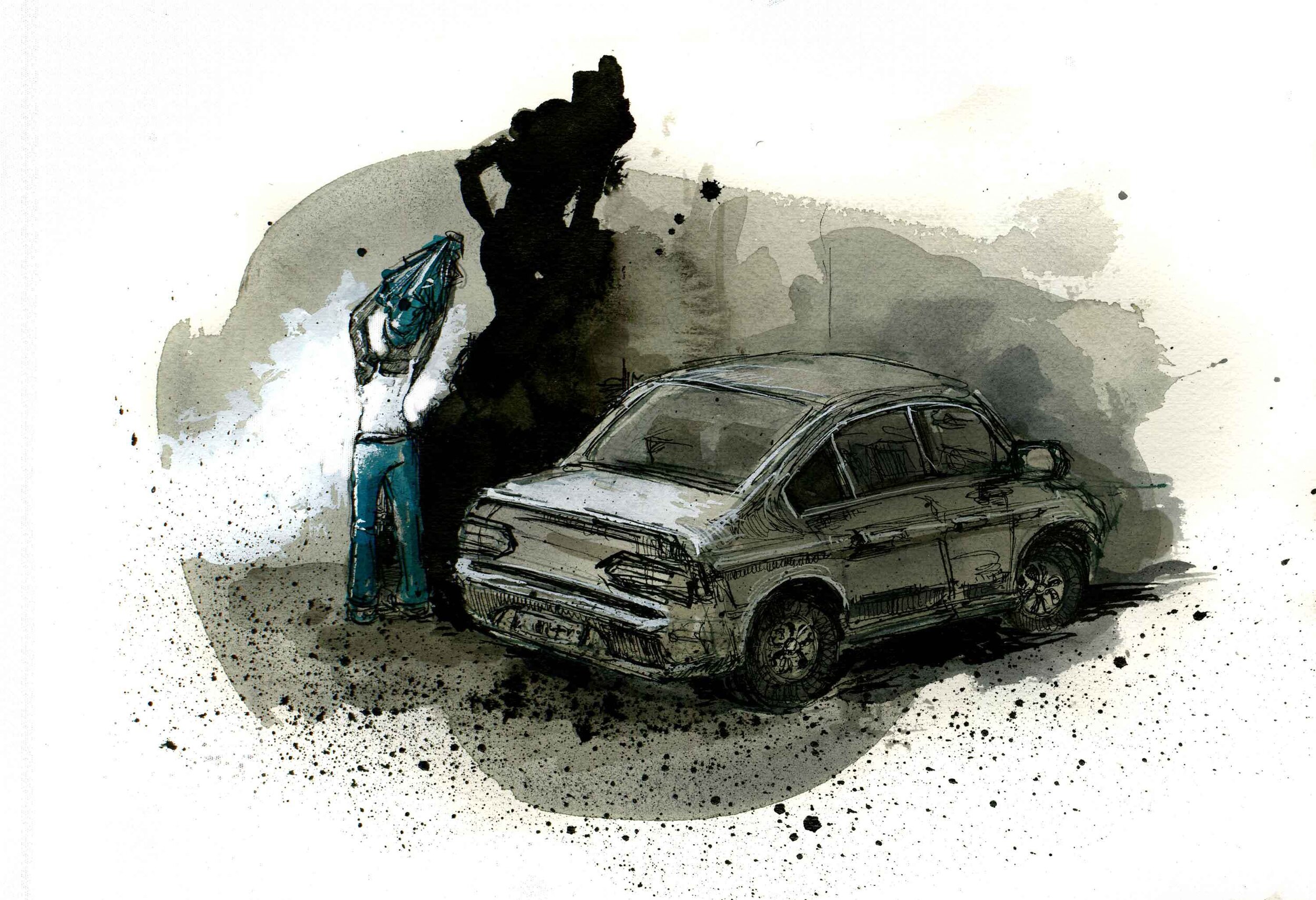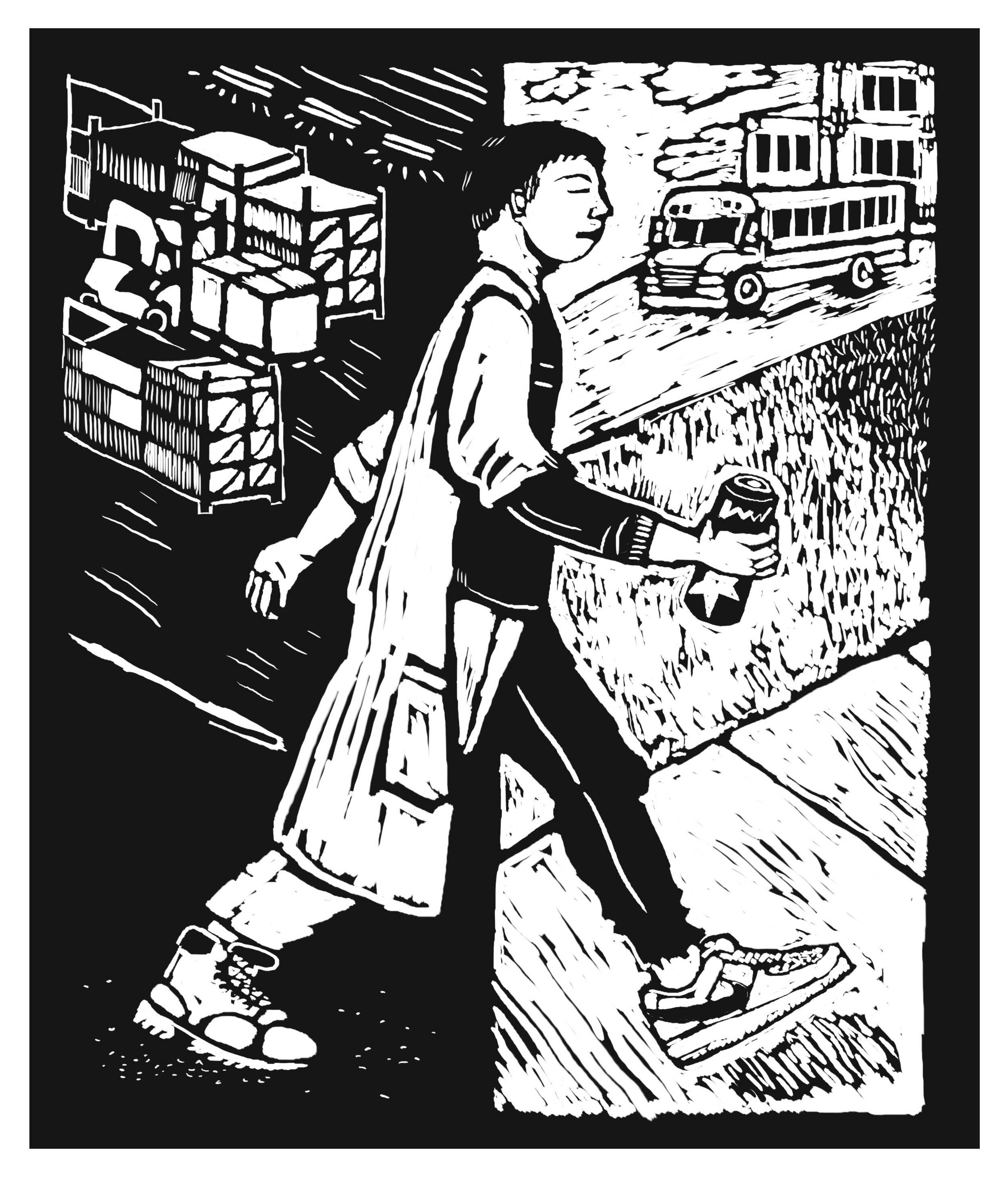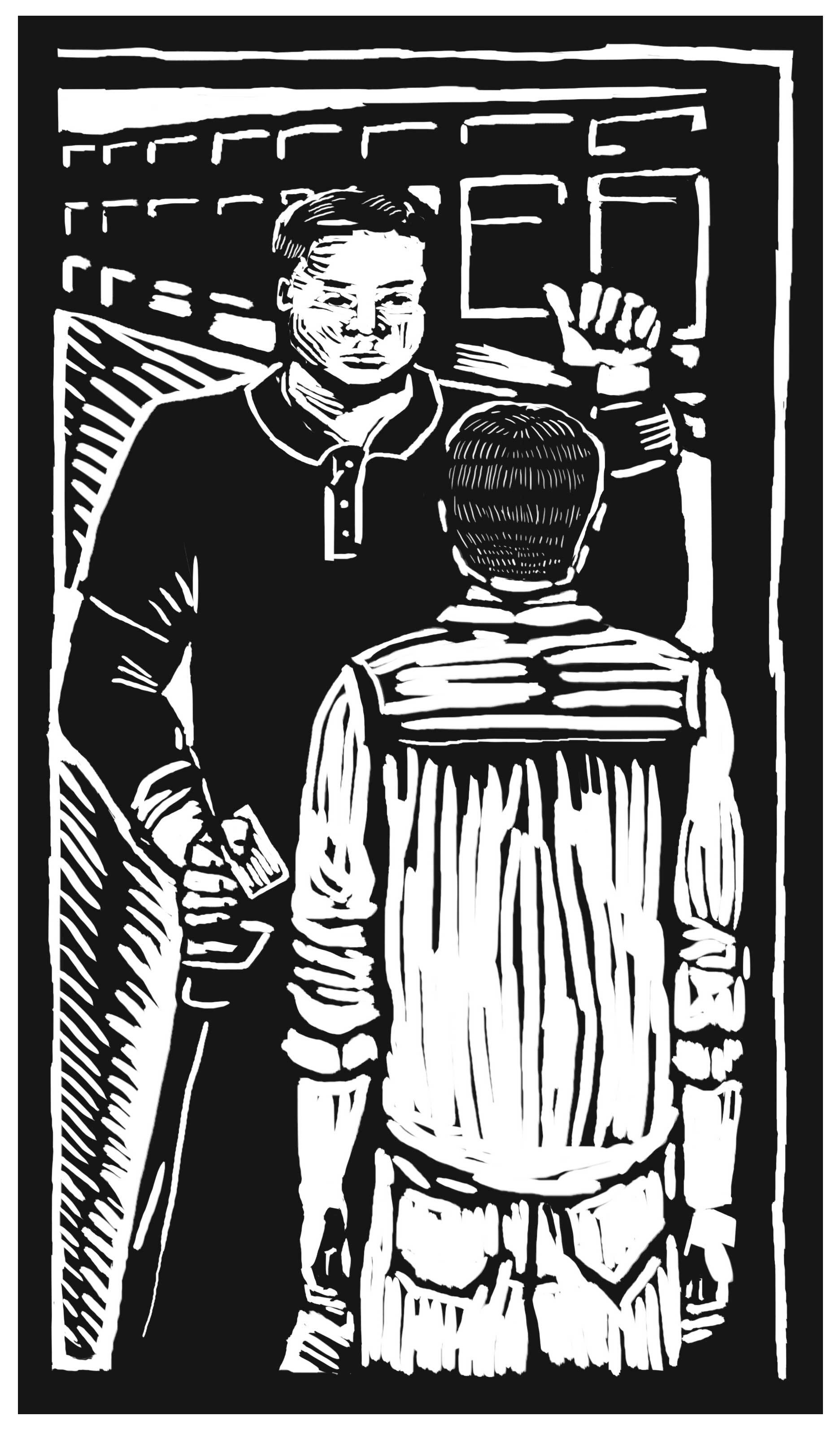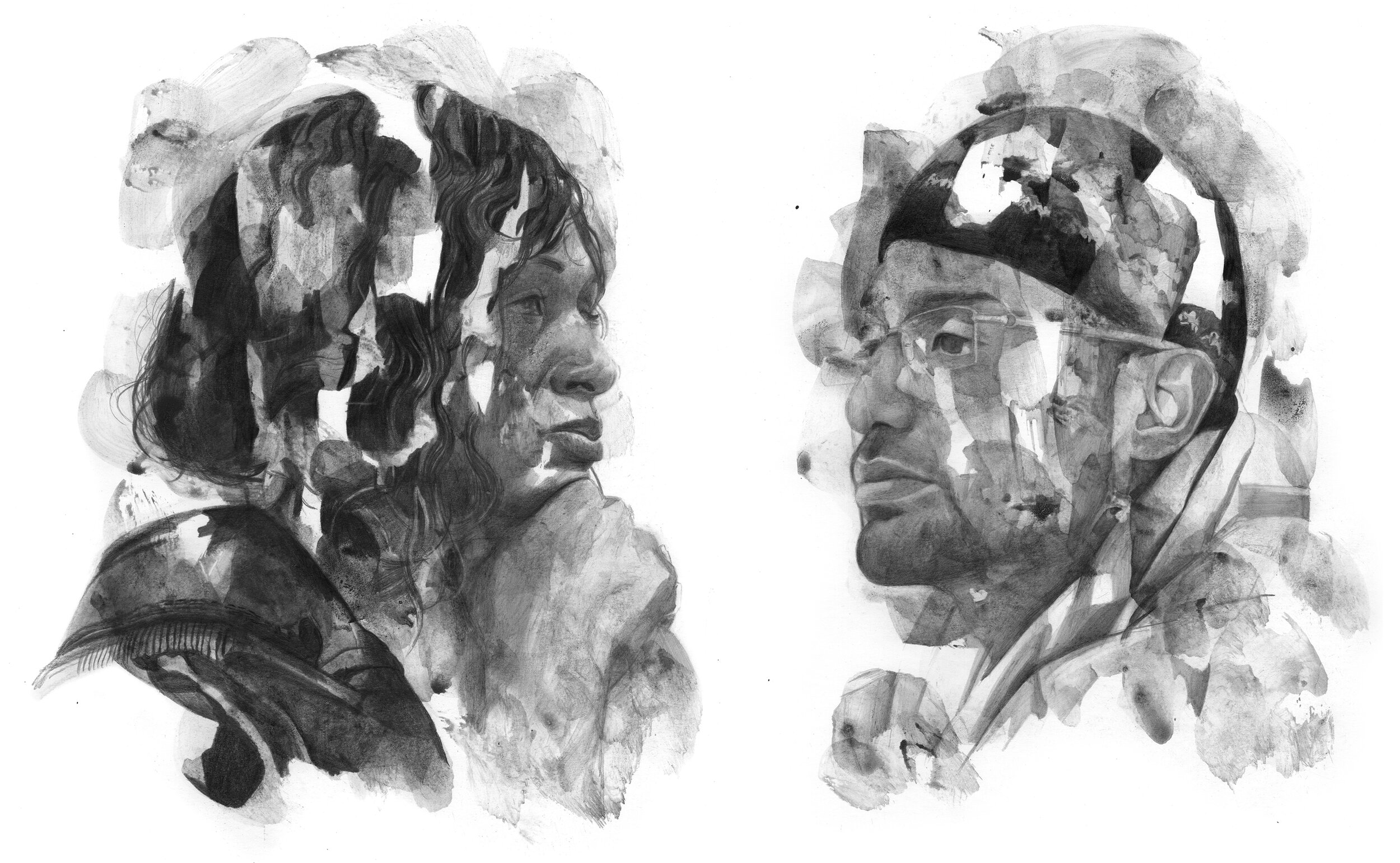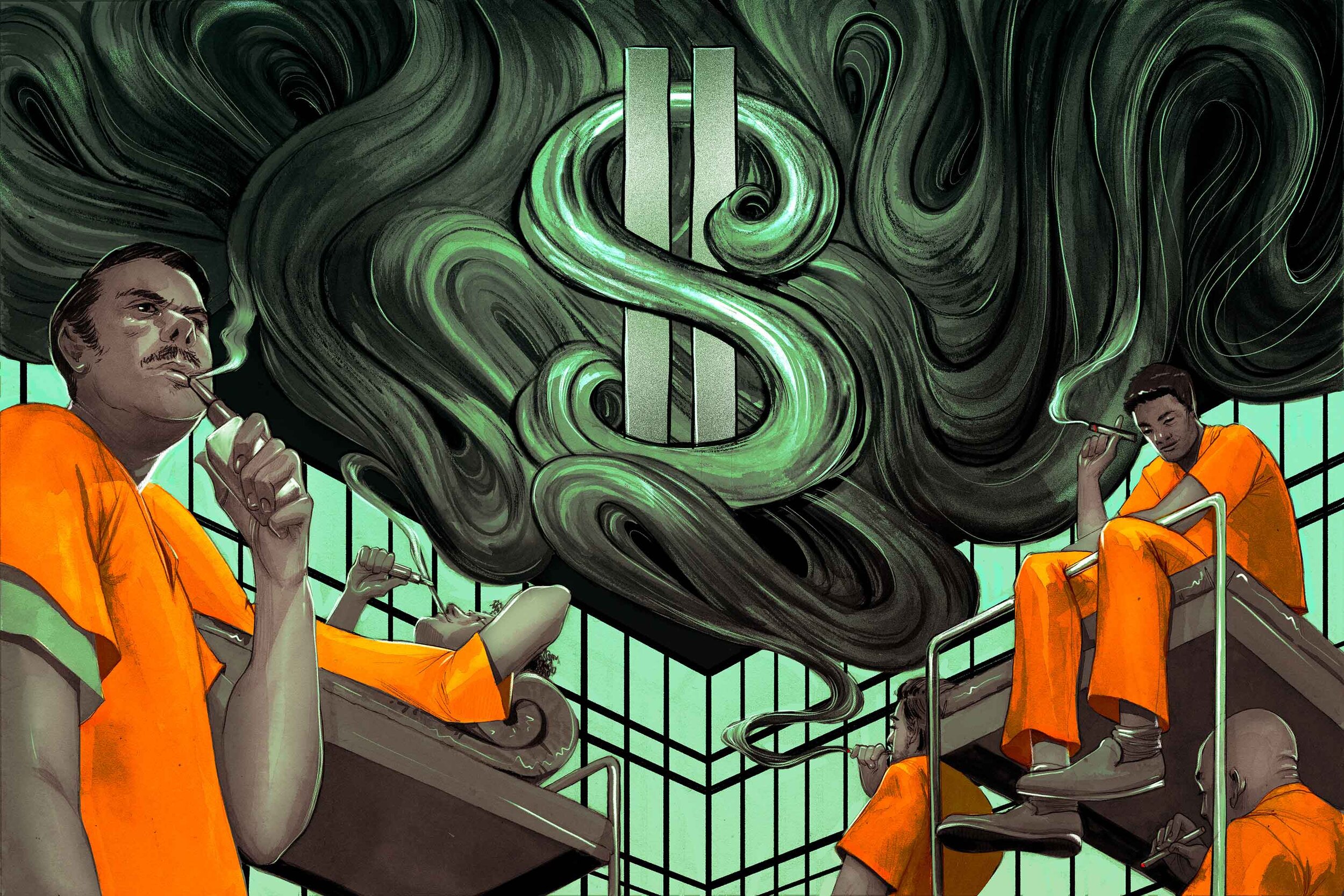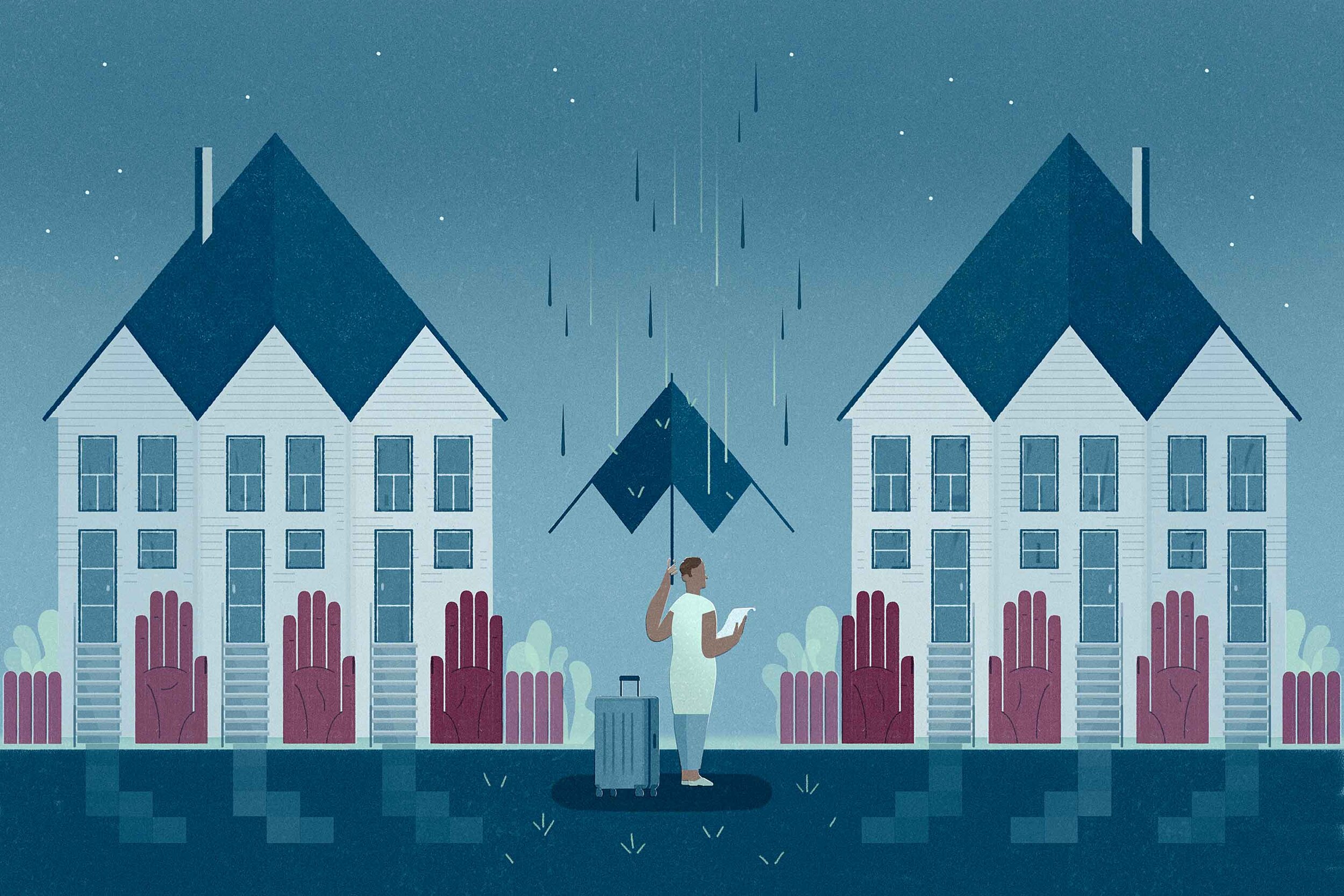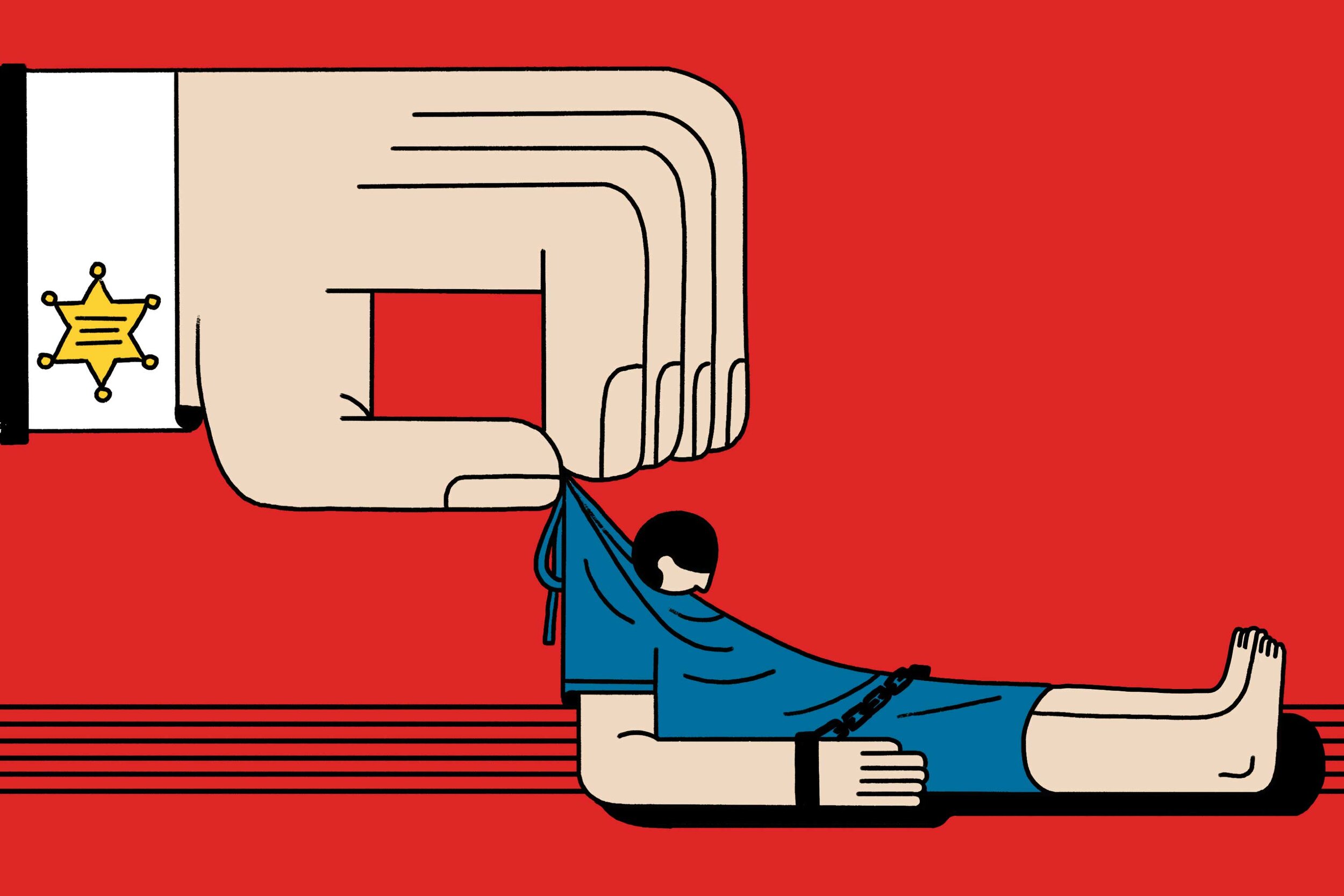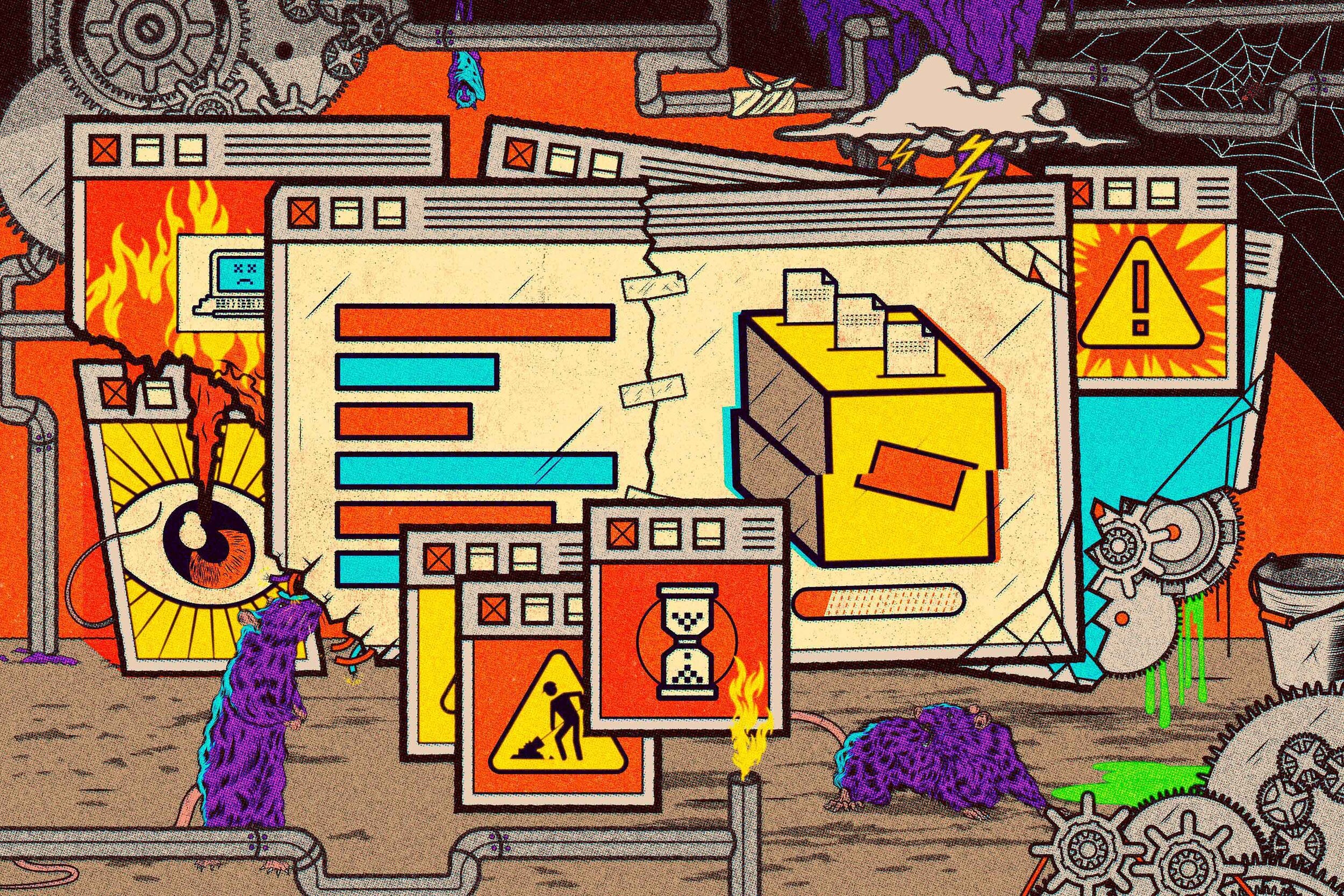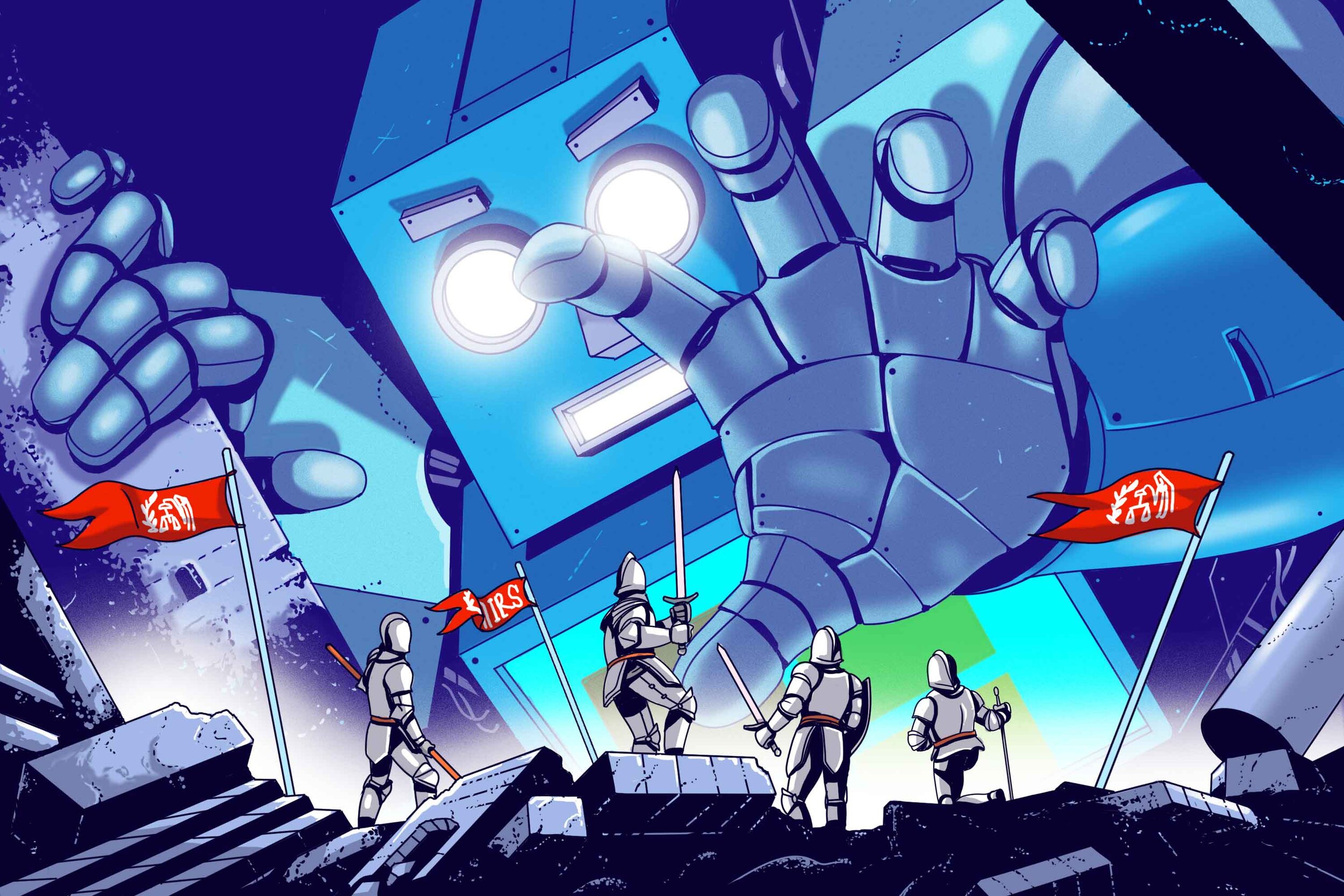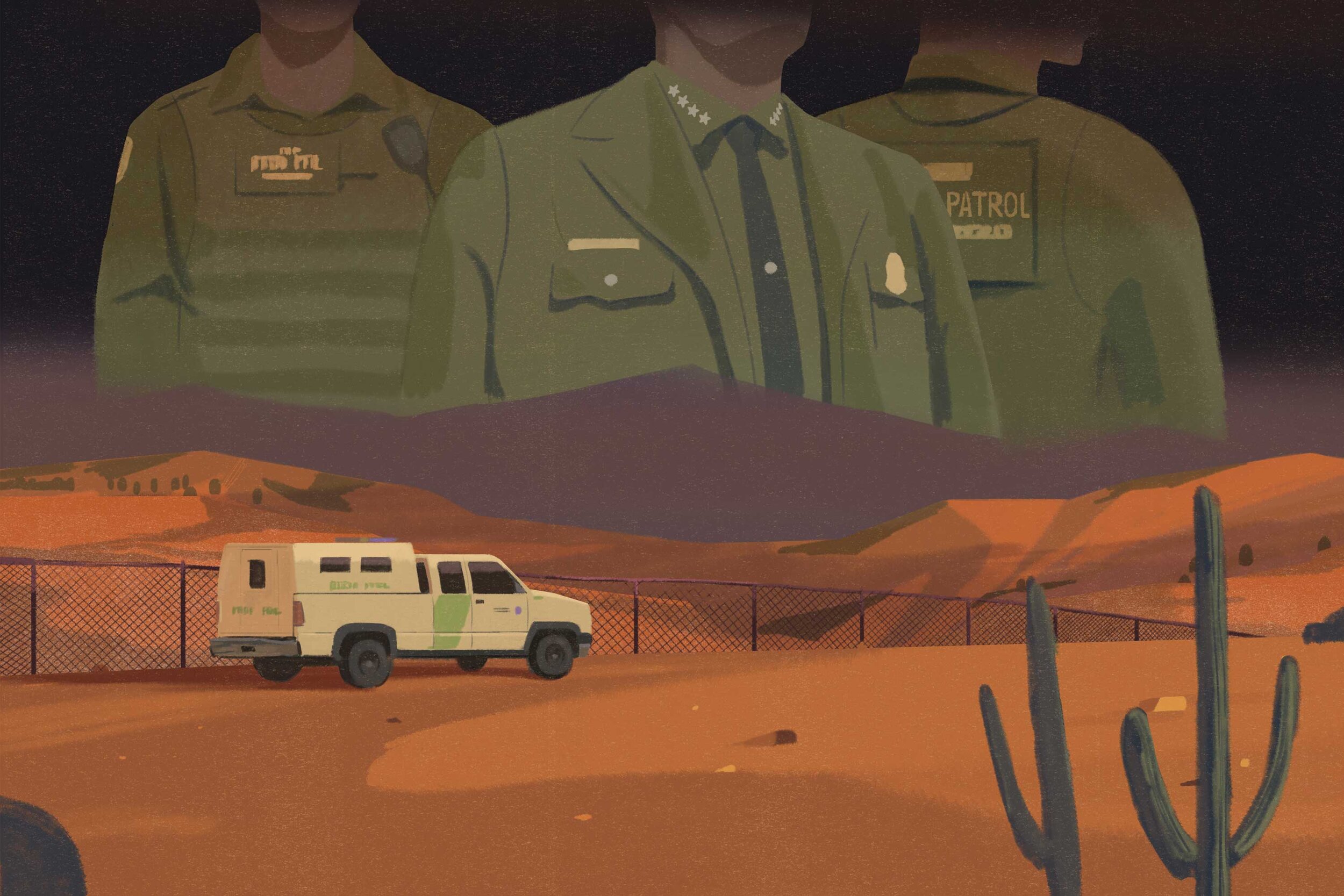Final hero image. Maura Losch/Axios.
Is 2024 the Cicadapocalypse or a Cicadapalooza?
My role: Co-art director and co-illustrator with Maura Losch. Published by Axios.
I made style and color palette mood boards in Figma, created value studies and color sketches for the hero image and line breaks (the line break ideas ultimately got cut), and painted all the textures by hand with watercolor, acrylic and ink.
I mailed all the textures via USPS to Maura who created the final illustrations using a Cricut machine and Adobe Illustrator. Developers Will Chase, Kavya Beheraj, and Jared Whelan also used the textures for the background of the entire story, in an explanatory comic, and in charts throughout the story.
Rejected hero image sketch #1
Rejected line break concept
Value study for hero image.
Celebrity Status: Why Pandas Captivate Us
My role: Art director, illustrator, reporter, and fact checker. Published by Axios.
Early sketches/storyboards below:
Life and Death, But No Trash Pickup: Diary of a Young COVID-19 Nurse
My role: Art director. Illustrations: Molly Crabapple. Published by ProPublica.
State of Denial: Inside Arizona’s Division of Developmental Disabilities
My role: Art director, photo editor, web producer. Illustrations: Make Studio. Photos: Mamta Popat. Published by ProPublica and Arizona Daily Star.
Inside the Lives of Immigrant Teens Working Dangerous Night Shifts in Suburban Factories
My role: Co-art director and photo editor, with Lisa Larson-Walker. Illustrations: Christie Tirado and Gaby Hurtado Ramos. Photos: Sebastián Hidalgo. Published by ProPublica, El País, and Mother Jones.
He’d Waited Decades to Argue His Innocence. She Was a Judge Who Believed in Second Chances.
Nobody Knew She Suffered from Alzheimer’s.
My role: Co-art director with Lisa Larson-Walker. Illustrations: Thomas Cian. Published by ProPublica.
Thomas Cian for ProPublica. Original photograph of Judge Simpson by Jesse Ward.
The Ransomware Superhero of Normal, Illinois
My role: Art director. Illustrations: Benjamin Marra. Published by ProPublica.
Nobody Accurately Tracks Health Care Workers Lost to COVID-19. So She Stays Up At Night Cataloging the Dead.
My role: Art director and photo editor. Illustration: Yann Kebbi. Photos: Carlos Bernate. Published by ProPublica.
At a Great Price: The True Cost of the Sears Headquarters Deal
My role: Art director and photo editor. Illustrations: Joan Wong. Photos: Pat Nabong. Published by ProPublica and the Daily Herald.









































